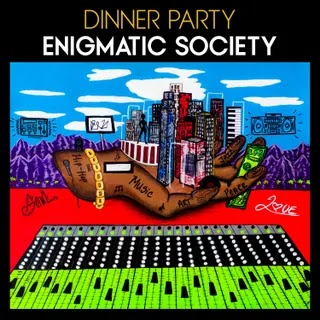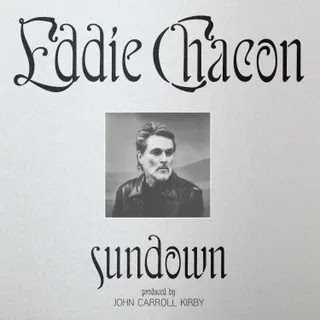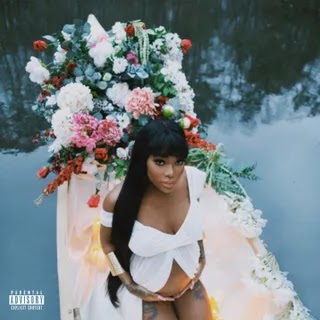Working again with Aaron Dessner, Swift challenges herself to find new dimensions within the moody atmosphere: fingerpicked ballads, colorful pop music, and her first country songs in years.
The tale of how evermore came to be is the stuff of first loves, holiday rom-coms, Taylor Swift songs. Crafting the woodsy surprise album folklore in isolation, she felt the spark of something exciting and new, and knowing all things must pass, wanted to make it linger just a little longer. Swift started telling romantic, bittersweet stories like this as a teenage songwriter in the mid-2000s, and her first instinct was to pair her words with glossy, plainspoken country-pop. As she became one of the most famous artists on the planet, the sound of her music followed the trajectory of fame itself: boundless and airborne through the early 2010s—then omnipresent and colossal, on the verge of suffocating by 2017’s Reputation.
Now 31, Swift is enjoying a phase characterized by great unburdenings. She described her 2019 album Lover like a deep breath, and she has spent the 16 months since its release in a kind of elongated exhale. Early this year, she attempted to unload a career’s worth of self-analysis and confessions in a documentary titled Miss Americana. In one scene, filmed just ahead of her 29th birthday, she experienced a minor panic attack while eating a burrito in the studio: “I kind of don’t really have the luxury of figuring stuff out,” she said, “because my life is planned two years ahead of time.” Any day now, she predicted, her proposed tour dates would start rolling in and her future would, once again, harden into a string of obligations.
Of course, most people’s plans were canceled in 2020, and Swift is instead making the quietest, most elegant music of her career with an unexpected collaborator, the National’s Aaron Dessner. In contrast with the producers who helped amplify and smooth her songwriting for the masses, Dessner invited Swift to ramble and elaborate, to tell stories from beginning to end, to invent fictional characters with interconnected storylines. He is the friend who offers a comfortable place to spiral, leaning in and refilling their wine glasses. In other words, he would probably be really stoked about the 10-minute version of “All Too Well” with the extra verses and cursing.
The way Swift tells it, she and Dessner were so invigorated by the process of making folklore that, without a standard press cycle and tour to follow its release this summer, they decided to just keep working. Five months later, we have evermore, a companion album built from the same general sounds and personnel, with Jack Antonoff, Bon Iver’s Justin Vernon, and Swift’s boyfriend, actor Joe Alwyn, all returning to the fold. It’s the fastest follow-up in her career and her first album to not directly overhaul the sound of its predecessor: The goal isn’t to recapture the glow of folklore’s cabin getaway but rather to extend her stay for another season.
While folklore seemed to materialize from nowhere as a complete, cohesive vision, evermore is structurally akin to something like 2012’s Red, where the breadth of her songwriting is as important as the depth. Within its 15-song, hour-long tracklist, you will find the closest things to country music she has written in years (the gorgeous “cowboy like me,” the Haim-assisted true-crime anthem “no body, no crime”) and colorful pop music she largely avoided in her last batch of recordings (“long story short,” “gold rush”). Elsewhere, there’s a ballad in a 5/4 time and another that bursts suddenly into a Bon Iver song halfway through before gently floating down to earth. “I haven’t met the new me yet,” Swift sings at one point. While that may be true, she has found plenty of new ideas for the old one.
Dessner’s presence, his deft fingerpicking, somber piano, and wintry string arrangements, remains crucial to this music, and Swift challenges herself to find new dimensions within the moody atmosphere he’s honed over the past two decades with the National. Their instinct together is to leave her songwriting artfully uncluttered, as in the spacious piano ballad “champagne problems,” or to furnish her voice in cozy chambers of acoustic guitar, cello, and male duet partners. (Ironically, the National’s own Matt Berninger ends up sounding somewhat out of place in “coney island,” especially compared to Vernon, the most natural and inventive vocal accompanist Swift has found to date.)
On her own, Swift remains a versatile and expressive vocalist—hear the scare quotes in her delivery through the lightly clattering kiss-off of “closure” (“Don’t treat me like some situation that needs to be ‘handled’”). She has always been a wordy lyricist, often seeking to mimic the sound of rushing, restless endorphins, and here, she uses that skill to magnify sad, small moments like the home-for-the-holidays fling in “‘tis the damn season.” In a near whisper, she treats Dessner’s electric guitar framework as an empty diary page, her notes spilling into the margins, using every inch of space he offers to describe the fog on the windshield, the mud on the tires, the parking spot by her old school.
Another stunner is “ivy,” a knotty fairytale that reveals darker characters in the storybook setting of Swift’s early work. Backed by banjo, trumpet, and gentle harmonies from Vernon, she begins with an allusion to Miller Williams’ 1997 poem “Compassion.” “I’ll meet you where the spirit meets the bone,” she sings before describing a forest dreamland corrupted by someone else’s roots. The Arkansas poet she quotes happens to be the father of outlaw country legend Lucinda Williams, who used the same line as the title of the first album she released on her own label, 2014’s Down Where the Spirit Meets the Bone. (“We can do what we want to do now,” Williams said at the time, after decades of mistreatment from the music industry. “Plus we own the masters, everything we record.”)
Allowing her own biography to fall to the background, Swift loosens her need for narrative resolution and emotional clarity, sometimes letting the music speak for her. (An uncharacteristic retraction in “happiness”—“No, I didn’t mean that/Sorry, I can’t see facts through all of my fury”—suggests she’s striving toward more stoic, distanced writing.) The climactic “marjorie” is named after her maternal grandmother, an opera singer who died during Swift’s adolescence. Over Dessner’s pulsing keyboard arrangement, her lyrics are fragmented, almost chantlike, composed from bits of memories, advice, and regrets. As Swift considers how legacy works, she offers the album’s most forthright summoning of a ghost: “You’re alive/So alive,” she sings. “And if I didn’t know better, I’d think you were singing to me now.”
If the periods of hibernation between Swift’s records once felt crucial to the drama of her returns, her music now is filled with these momentary silences and breakthroughs. After a career spent striving for the next level of stardom, she has discovered a more sustainable path for evolution. I think about the caustic 2017 music video for “Look What You Made Me Do,” where she depicted herself as a zombie, lining up all her past selves to taunt each other; she seemed spent, haunted, sick of competing with herself. And I think of 2006’s “Our Song,” one of her first great songs, which took comfort in the idea that no music can capture the chaos of a lifetime, its moments of hope and loss, the familiar routines and sudden jolts. On evermore, she seems at peace with her past, in a suspended moment of transition, letting us follow along as she learns: Don’t just get settled, she tells us through this bounty of material. Get stronger.
















0 comments:
Post a Comment